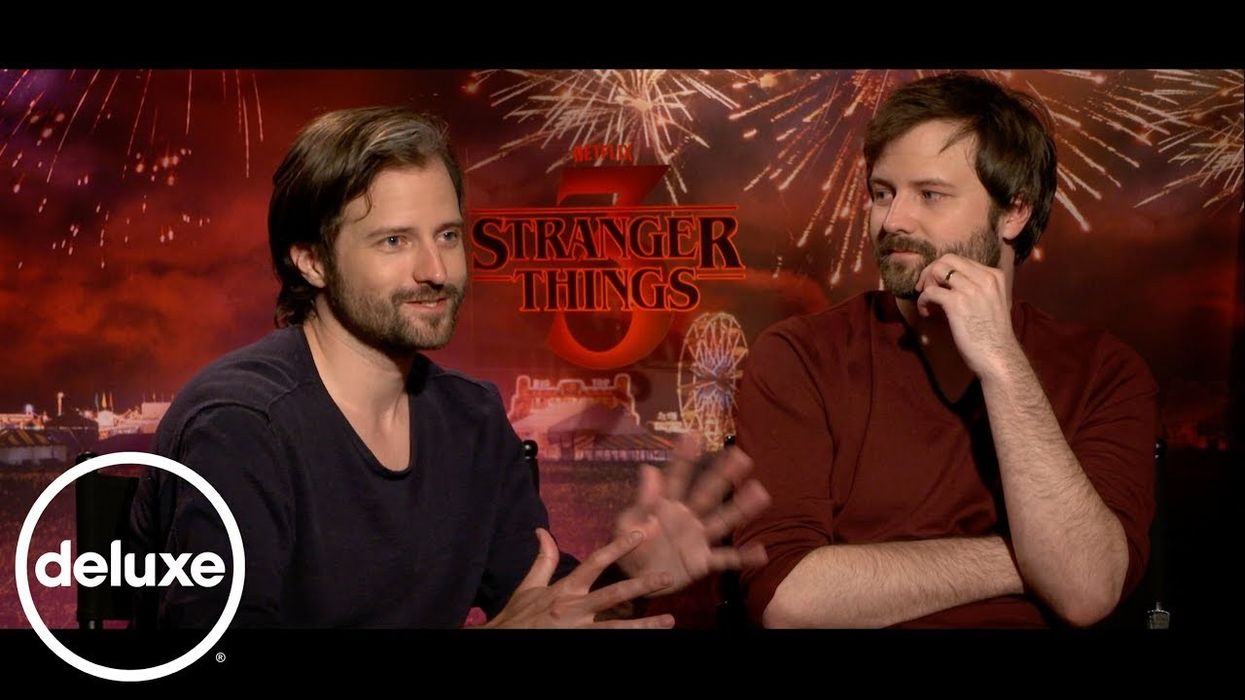EXCLUSIVE VIDEO: 'Stranger Things' Duffer Brothers on How to Break Into Directing
No Film School and Deluxe are partnering on a new series in support of emerging filmmakers.

"Breaking In" is a series for filmmakers in the process of their first project or just having completed it. We want to answer the questions, address the concerns, and reveal the lessons that everyone faces when they're battling to complete that feature or just trying to break into the industry.
Deluxe and its post-production companies EFILM (@EFILMHollywood) and Encore (@EncorePost) provide color finishing to Hollywood’s top filmmakers and emerging filmmakers alike, so we're thrilled to bring access to their colorists and filmmakers to our readers.
Matt and Ross Duffer recently worked with EFILM colorist Skip Kimball on the color finish of Stranger Things 3. Skip has done the previous two seasons. More articles will be coming soon with educational interviews with post-production colorist, mixers, and all the behind-the-scenes people who work on the films and TV shows you love.
Check out the interview with the Duffers on breaking in, and then take a look at the more in-depth discussion with Skip Kimball on the process.
EFILM’s Skip Kimball Brings New Vibrancy to Netflix’s “Stranger Things 3”
The third season of Netflix’s beloved sci-fi series Stranger Things finds the town of Hawkins, Indiana enjoying the summer of 1985 and the opening of a new mega-mall, at least for a brief while. Series creators Matt and Ross Duffer reteamed with EFILM Senior Colorist Skip Kimball and Cinematographer Tim Ives in setting the look for the latest installment, which features both familiar and new territory.
“Skip’s been with us since the very beginning (Season 1). He’s responsible for helping design the look for the show,” explained Matt Duffer.
“The previous two seasons of Stranger Things had muted palettes and were more foreboding. We begin season three with bright, fun, and disarming colors, but as we all know, not all is right in Hawkins,” Kimball said. “We had a wider gamut to work with since the world is more vibrant and alive this time of year, and the kids spend time at the new mall so there are lots of neon signs and energetic colors everywhere. We really embraced a saturated color palette.”
Part of the charm of Stranger Things stems from its nostalgic aesthetic, influenced by the iconic works of Steven Spielberg and John Carpenter, which are evoked in seasons one and two. With the core cast growing older this season, visual references leaned more toward the look of Fast Times at Ridgemont High and mid-80s MTV programming. Kimball completed the color grade at Deluxe’s Stage One in both HDR and Rec.709 SDR. A wide color gamut pipeline was maintained from acquisition to final delivery, with footage principally shot in 8K with RED Monstro VistaVision cameras, and all footage processed in REDWideGamutRGB color space using the Log3G10 transfer function.
“Working at Stage One was also great since the Duffer Brothers, who are a joy to work with, were able to do their sound mix just down the hall. That allowed them to jump between color and mix without having to drive across town. My goal has always been to offer the most creatively conducive and convenient environment to my clients. That’s why Stage One is designed the way it is; it allows for a one-on-one boutique experience while being supported by a world-class facility that can scale to tackle any challenges that come our way,” noted Kimball.
“I don’t know how we would have finished a show this complicated without the convenience of being able to jump between sound and color like we did,” added Ross Duffer.
Final episodes were delivered in Dolby Vision HDR in UHD, using the latest generation Dolby Vision toolset to maintain the Duffers’ creative intent across HDR and SDR devices, especially considering the broad reach of Netflix and the way its content is consumed via many different types of screens.
Kimball concluded, “Each episode of Stranger Things can have upwards of 1,000 cuts per episode; that’s a lot of fast-paced action and I’m thankful for my excellent team for keeping us organized and on schedule. The technical wizardry of Finishing Artist Tashi Trieu, my partner in crime, kept us nimble and responsive, and enabled us to accelerate our work in Dolby Vision, and our producers, Patrick Allen and Hershel Cohen, paid attention to the smallest of details and were very proactive, which is so important on a big project like this with so many moving components and layers of complexity.”











